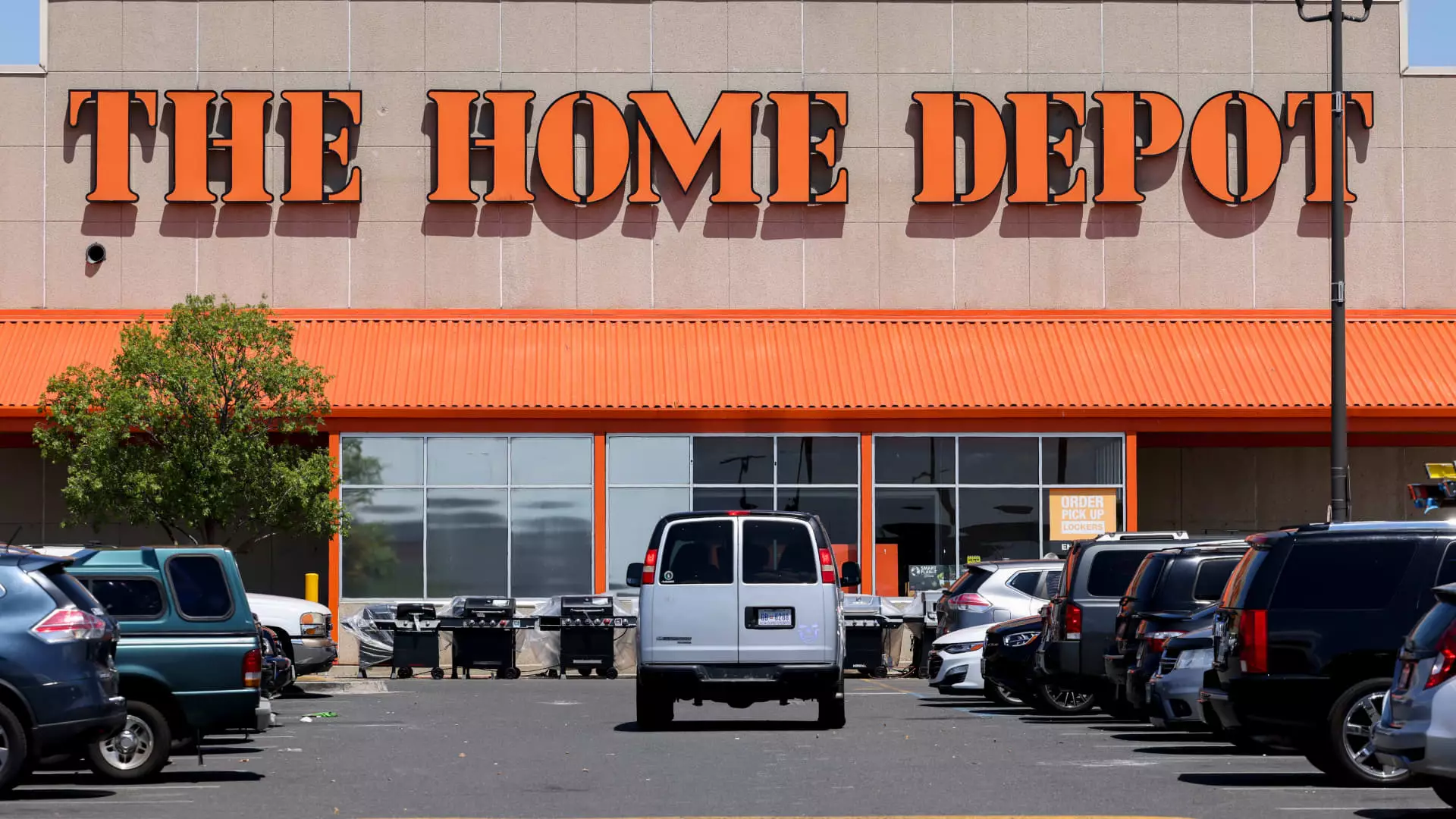In the world of retail and housing, few brands resonate as strongly as Home Depot. Recently, investment strategies pivoted toward higher stakes in this home improvement retail heavyweight, particularly in light of fluctuating mortgage rates and housing market dynamics. Having begun acquisitions of Home Depot shares just last week, investors are banking on a rebound in the housing sector, fueled by anticipated reductions in interest rates. The current position offers a unique opportunity, making Home Depot a compelling choice for savvy investors.
The experience of Home Depot reflects the uneven recovery seen across the broader market. With a modest uptick of about 7% year-to-date, the company trails behind the S&P 500’s impressive growth exceeding 16%. This disparity highlights a wider sentiment—a reluctance among investors to fully embrace Home Depot, primarily due to its recent volatility. After reaching a high of $395 in March on optimistic forecasts of multiple Federal Reserve rate cuts, the stock plummeted to approximately $325 by May, revealing a market that had swiftly recalibrated its expectations.
The landscape surrounding mortgage rates has emerged as a critical factor influencing Home Depot’s performance. Lower borrowing costs historically correlate with an uptick in housing transactions and, by extension, home improvement expenditures. Data suggests that once mortgage rates dip below a pivotal threshold of 6.5%, home-buying activities tend to rise. Recent trends demonstrate a downward trend in mortgage rates, falling to 6.29% after weeks of declines, indicating a potential shift in the impending housing turnover.
Home Depot’s investment thesis is closely intertwined with this trend. CEO Ted Decker emphasized this connection during recent earnings calls, pointing out the increase in mortgage applications following the dip in rates. The correlation between lower mortgage costs and heightened housing activity suggests that Home Depot stands at the cusp of renewed demand as borrowing becomes more accessible.
Despite the immediate challenges facing Home Depot, analysts remain optimistic about future growth trajectories as housing activities are projected to rebound. The essential insight lies in the historical cycles of housing turnover: typically, when mortgage rates stabilize and drop below a certain point, significant buying and renovation activity follows. As such, investors are drawn to Home Depot not only for its defensive positioning during economic uncertainty but also for its robust potential for growth as the housing market revitalizes.
Temperature checks on consumer confidence are vital. Though retail spending may show signs of strain, Home Depot’s reliance on the inherently resilient housing sector sets it apart from conventional retail rivals. Rising home values empower homeowners to invest in their properties, thereby translating into increased demand for Home Depot’s offerings. Decker reported an impressive rise of nearly $18 trillion in home equity since 2019, suggesting that consumers harbor the financial means to resume renovation and improvement projects.
While competitors such as Lowe’s also appear promising, Home Depot distinguishes itself with strategic acquisitions and a focus on professional customers. The recent acquisition of SRS Distribution for over $18 billion illustrates their commitment to expanding market share and boosting revenues through professional contractor services. By elevating its Pro business, Home Depot expects to unlock additional opportunities within a marketplace projected to exceed $1 trillion.
Furthermore, the current market positioning offers dividend-hungry investors an enticing proposition. With a yield nearing 2.4%, and despite a temporary pause on stock buybacks until 2026 due to funding obligations following the acquisition, Home Depot remains a stable choice for generating income while awaiting a potential recovery in housing markets and subsequent stock price appreciation.
Investing in Home Depot at this juncture appears strategically sound. The interplay between declining mortgage rates, home equity growth, and a poised market landscape indicate that significant shifts may be imminent. While current comparable sales may present a picture of stagnation, the upcoming months could yield markedly improved performance as market conditions stabilize and investor sentiment shifts.
The key takeaway is that Home Depot is not merely a home improvement retailer; it is a company rooted in the larger economic fabric tied to the housing market. As mortgage rates fluctuate and consumer activity picks up, now might be the opportune time to capitalize on a stock poised for a comeback. Investors aiming for a core holding in the retail or housing sector could do well to align their portfolios with the future growth potential of Home Depot.

